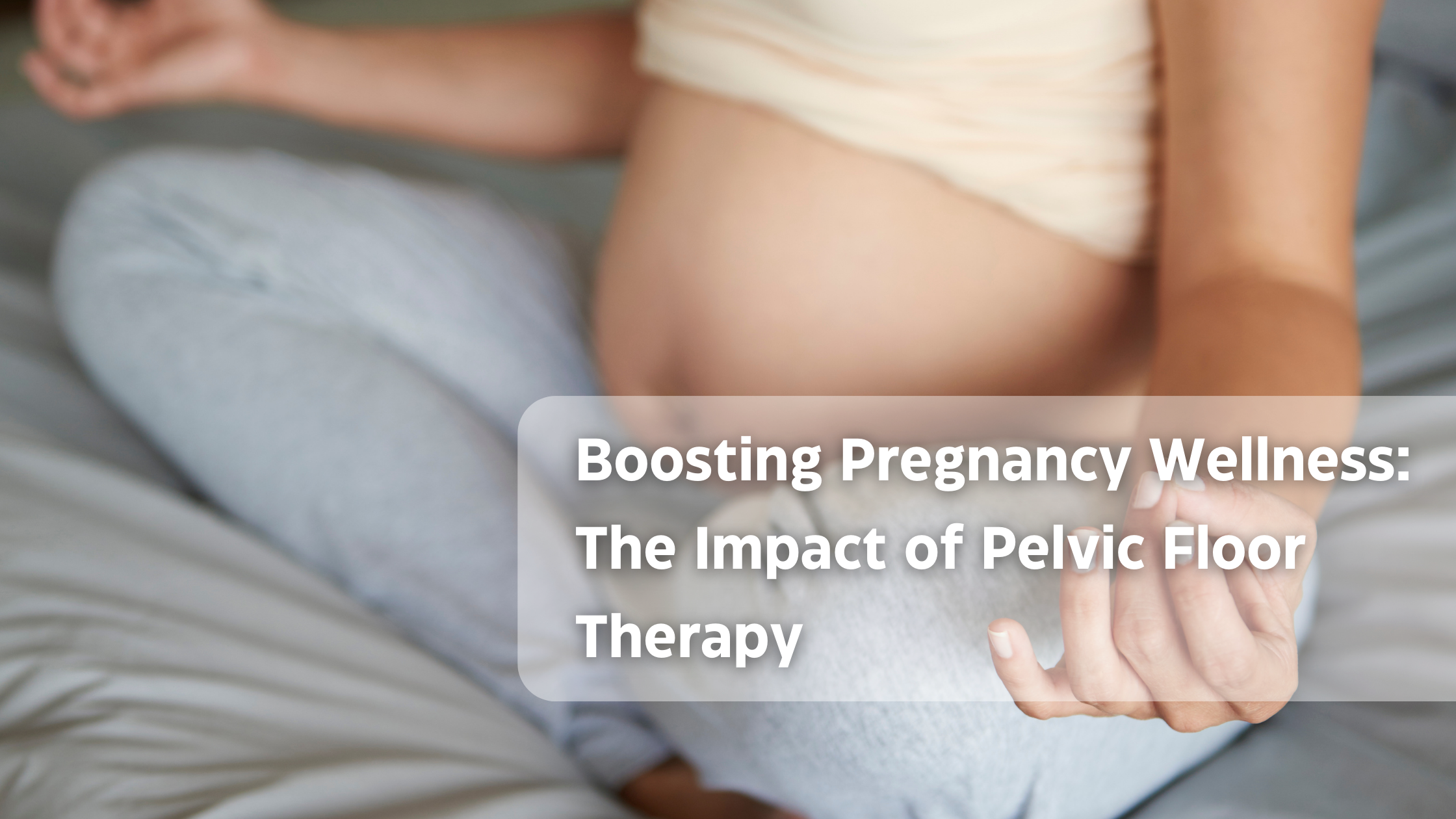Boosting Pregnancy Wellness: The Impact of Pelvic Floor Therapy
Understanding the Pelvic Floor: Importance and Functionality

What is the Pelvic Floor?
The pelvic floor is a group of muscles that span the bottom of the pelvis, supporting important organs like the bladder, uterus, and bowel. These muscles help control urination, bowel movements, and even play a key role in sexual function. During pregnancy, the weight of the growing baby puts pressure on the pelvic floor muscles, and childbirth can stretch or even damage them, leading to a range of issues if not properly addressed.

The Role of the Pelvic Floor in Pregnancy
During pregnancy, the pelvic floor muscles have a big job and they help support the growing baby and ease childbirth. These muscles stretch and hold extra weight as the baby grows also keeping them strong is key for a smoother pregnancy and helps with getting back into shape after birth. Pelvic floor therapy is now gaining popularity as more women recognize its importance in preventing and addressing common issues like incontinence, pelvic pain, and prolapse.
How the Pelvic Floor Affects Labor and Delivery
The pelvic floor plays a key part in labor and delivery because a strong pelvic floor can ease this process and it can also help mothers control pushing also the weak muscles may lead to a tougher delivery and more tears. Then after birth, recovery can be faster if the pelvic floor is strong and also lessess stress incontinence issues. Pelvic floor therapy helps in making the muscles ready for birth.
The Benefits of Pelvic Floor Therapy for Expectant Mothers
Strengthening the Pelvic Floor Muscles
Pelvic floor therapy during pregnancy focuses on enhancing the strength of the pelvic muscles. These muscles support the bladder, uterus, and bowels, crucial as the baby grows and pressure increases and have a strong pelvic muscles can improve posture, reduce pain, and assist in a smoother birthing process. This therapy involves exercises like Kegels, which target and strengthen these supportive muscles, often leading to improved control during labor and fewer complications.
Improving Maternal Health and Well-being
Pelvic floor therapy can be a key factor in improving maternal health and it helps mums feel better during pregnancy and this care can boost their energy. It may also ease common discomforts but with therapy, mums can also relax better and also improves sleep, which is vital for mother and baby. Good pelvic health means less stress on the body and will helps mums to stay active and enjoy this special time more. Remember, a healthy mum means a healthy baby.
Reducing the Risk of Pelvic Floor Disorders Post-Pregnancy
Practicing pelvic floor therapy during pregnancy enhances future health. It significantly lowers the risk of developing pelvic floor disorders, such as urinary incontinence and pelvic organ prolapse, after childbirth and also strengthening these muscles prepares them for the stress of delivery and aids in faster recovery. Establishing a routine with exercises like Kegels can safeguard pelvic health, ensuring a better postpartum experience and a regular, gentle exercises maintain muscle tone and support bladder and bowel functionality, fostering long-term maternal well-being.
Incorporating Pelvic Floor Therapy into Your Routine
Step-by-Step Guide to Pelvic Floor Exercises
To include pelvic floor therapy in your daily routine, start with basic exercises:
Kegel exercises (image 1) involve tightening your pelvic muscles as if you're stopping the flow of urine, holding the contraction for 5 seconds before relaxing. Bridges are done by lying on your back with knees bent, lifting your hips, and engaging your pelvic floor as you hold the position. Squats (image 2) also strengthen the pelvic floor by lowering into a squat and squeezing the pelvic muscles. Pelvic tilts, performed on your back with bent knees, involve tilting your hips upward while engaging the pelvic floor. Lastly, deep breathing exercises (image 3) can activate the pelvic floor for example inhale deeply and exhale slowly to promote relaxation and control of these muscles.



Postpartum: The Pelvic Floor After Birth
The postpartum period is often when pelvic floor therapy becomes crucial. Childbirth, especially vaginal delivery, can stretch and sometimes tear the pelvic floor muscles, leading to a variety of challenges. Common postpartum pelvic floor issues include:
- Incontinence: After giving birth, many new mothers experience urinary or bowel incontinence, which can happen during activities like laughing, coughing, or sneezing. This occurs because the pelvic floor muscles, which control bladder and bowel movements, may be weakened or stretched from childbirth. Pelvic floor therapy can help strengthen these muscles, reducing or preventing leaks and improving overall control.
- Pelvic Organ Prolapse: In more severe cases, weakened pelvic floor muscles may lead to a condition called pelvic organ prolapse, where organs like the bladder, uterus, or rectum shift out of their normal positions. This can cause discomfort, pressure, or even visible bulging. Pelvic floor therapy helps support these organs by strengthening the muscles and preventing the condition from worsening.
- Pelvic Pain: Persistent pain in the pelvic region, hips, or lower back is a common issue after childbirth if the pelvic floor muscles and surrounding tissues aren’t properly rehabilitated. This pain can make daily activities difficult and uncomfortable. Pelvic floor therapy can alleviate this by relaxing, strengthening, and properly coordinating these muscles, promoting recovery and reducing pain over time.

Conclusion
Pelvic floor therapy is a valuable tool for mothers, both during pregnancy and postpartum, to strengthen the pelvic muscles that support vital organs and maintain physical well-being. By incorporating targeted exercises, mothers can improve comfort during pregnancy, ease the process of childbirth, and prevent or reduce postpartum issues like incontinence, prolapse, and pain. With regular pelvic floor care, mothers can enhance recovery and enjoy a healthier postpartum experience, ensuring long-term support for both their own health and that of their growing families.

